
Screenwriting: The Goal of Dialogue
Let’s explore how timing, placement, character development, and the simplicity of a perfect line creates intriguing dialogue.
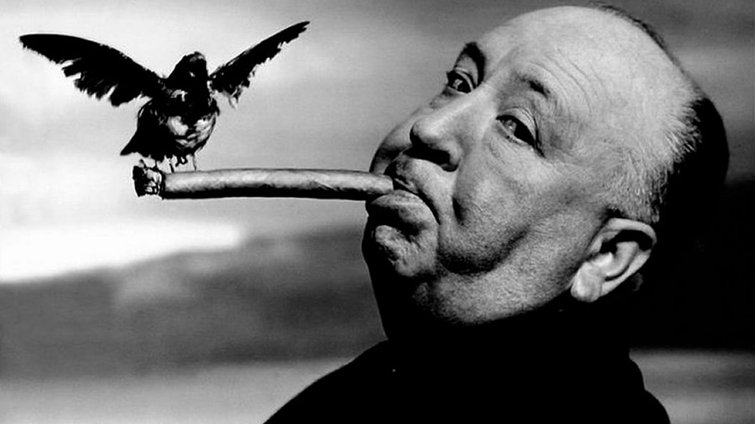
Hitchcock also treated actors as props – so take that quote above as a guide, not a bible. Film is a visual medium and a writer’s first instinct should be to reveal character through actions. However, dialogue is an important tool to offer clues on who a character is, what they care about, and the strategies they employ to achieve their goals. Dialogue is not a conversation, it is motivation. Identifying what a character wants moment-to-moment will influence what they say and how they say it. The goal of dialogue is the writer’s intent and the character’s strategy to achieve it.
The Power of Earned Words
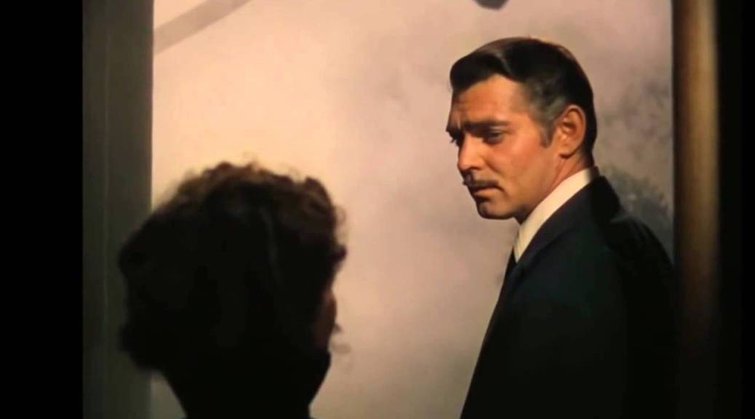
Gone with the Wind is nearly four hours long. Chances are, what you remember from that film, even if you’ve never seen it, is Rhett Butler’s iconic line, “Frankly my dear, I don’t give a damn.” On its own, not terribly clever wordplay.
The reason it works and sticks is because of setup and payoff. There have been hours invested and explored in setting up Rhett Butler’s main emotional goal: the love of Scarlett O’Hara. He chases her, teases her, bullies her, saves her, and fights for her. So, when he’s finally reached the point of not only giving up but not caring, it’s significant and powerful.
The words only matter because of the prior strategic actions taken that give it meaning.
When a line of dialogue is hard-earned, it’s not the words themselves that matter, but why they’re being said. By the time Jack Nicholson screams “You can’t handle the truth” in A Few Good Men, the audience has seen him control, manipulate, manage, and maneuver his position of power. That line is the culmination of Tom Cruise finally getting the upper hand and outplaying him. Cruise earns that victory by the effort and growth of character we’ve seen throughout the film.
In As Good as it Gets, staying with Nicholson, his fantastic line, “You make me want to be a better man,” only works because we’ve seen him buck and bristle the entire film and push people away, being selfish and rude. Finally, he lets his defenses down and is willing to be vulnerable. That line, if earlier in the film, would have no impact.
Subtext Makes Compelling Drama
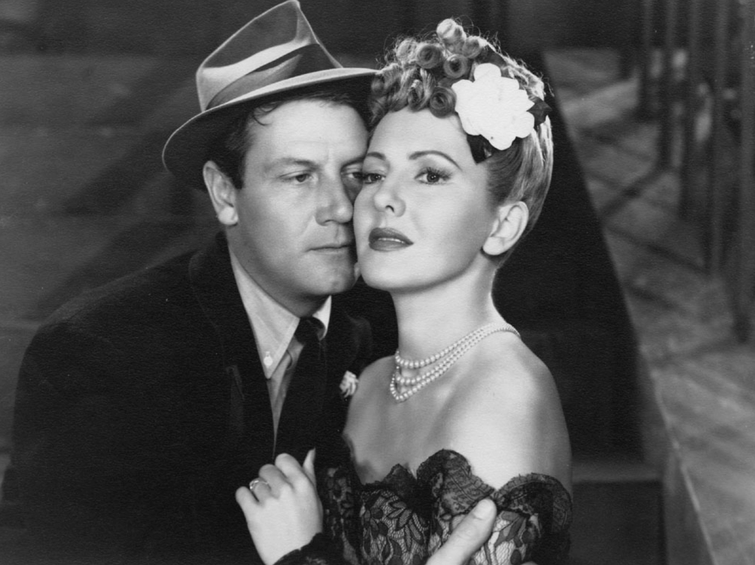
The challenge with dialogue isn’t to tell us what we already know—it’s the subtext, what’s left unsaid, that’s most compelling. Good writing reveals character through behavior, with dialogue frequently serving as a shield or diversion.
A delicious example of this can be found in George Stevens‘ 1943 film, The More the Merrier. There was a severe housing shortage during World War II, especially in Washington, D.C., where Jean Arthur rents an apartment. She offers half of her apartment for sublet, considering it her patriotic duty, expecting the tenant to be a woman. However, she gets a mischievous, middle-aged man instead. He talks her into subletting to him and then promptly sublets half of his half to young, irreverent Joel McCrea—a perfect comedy and romance scenario.
In one of the best scenes in the film, Jean Arthur is asking Joel McCrea about other women. Although it’s never expressed verbally, everything about their behavior suggests they’re completely enamored with each other. Their actions, behavior, and how they look at each other tell the tale.
The subtext in the dialogue says it all and makes the scene more engaging to watch. If she revealed her interest, it would all be pretty dull. The way it’s written makes it sexy and compelling.
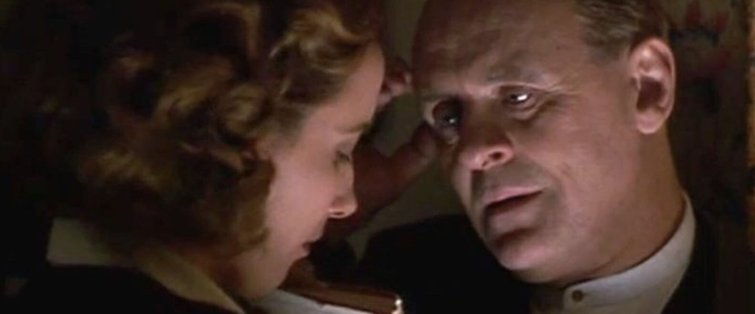
In The Remains of the Day, two people are madly in love but cannot acknowledge it. In a seemingly straightforward scene, Emma Thompson disturbs Anthony Hopkins while he’s reading a book, and she asks what he’s reading. Her goal is for him to open up, get to know him, and coax him into expressing how he feels. But because of his position and station in life, he will not allow himself to connect with her on a personal level. Although the dialogue is about the book—it isn’t. It’s tender and heartbreaking.
Sometimes, it is both emotional and societal why characters might talk in code. In Barry Jenkins‘ Moonlight, a simple phone conversation between two men who had a sexual encounter years prior has the weight of regret and longing. The dialogue is unremarkable. The connection is what is significant.
In a later scene, when Trevante Rhodes visits André Holland at the diner where he works, he asks, “Why did you call me?” He answers, “He played the song, man,” alluding to a song that stirred a memory. The rest of the scene is played out in action. An unspoken dialogue occurs as Holland plays the song on the jukebox. The men move through stages of apology, acceptance, and renewed attraction.
Overcoming Obstacles

Rarely do people reveal themselves at their most fundamental level. Everyone lives with the fear of losing what they have or not being able to achieve what they want. Dialogue is a verbal strategy that involves two or more people trying to get what they wish while overcoming an obstacle.
A good example of this is in Up in the Air, in a scene with Jason Bateman, George Clooney, and Anna Kendrick. Bateman wants to save money and has brought in Kendrick to change the way they do their downsizing business from on the road to online. Clooney is opposed to the change saying, “There is a methodology to what I do. There is a reason it works.”
Each character has a goal, a motivation, and a strategy. Clooney’s character’s verbal strategy is to engage Kendrick in a role-playing game where he exposes her flaws. He wins the battle, but not the war, as change is inevitable. It’s the point of the whole film, Clooney’s transformation from emotional frequent flier to seeing the value in putting down roots and repairing and building relationships.
Sometimes a character’s main obstacle in a scene is not the other person but their own insecurities, core wounds, or flaws. Jesse Eisenberg‘s conflict in the opening scene of The Social Network isn’t his girlfriend, Rooney Mara, who tries gallantly throughout the first half of the scene to keep it light, interesting, and conflict-free.
His obsession with being elite, special, and superior derails it. Eventually, he crosses a line, insults her, and she breaks up with him. It’s a very dialogue-dense scene, but each beat is goal-driven and character-revealing.
At one point, Mara tells him, “Sometimes you say two things at once, and I’m not sure which one I’m supposed to be aiming at.” Then, she adds, “Dating you is like dating a StairMaster.” The writing style that justified that line isn’t by accident, but by design. Aaron Sorkin‘s dialogue bobs and weaves as Eisenberg pinballs subjects making it dizzying to keep up.
Make It Matter
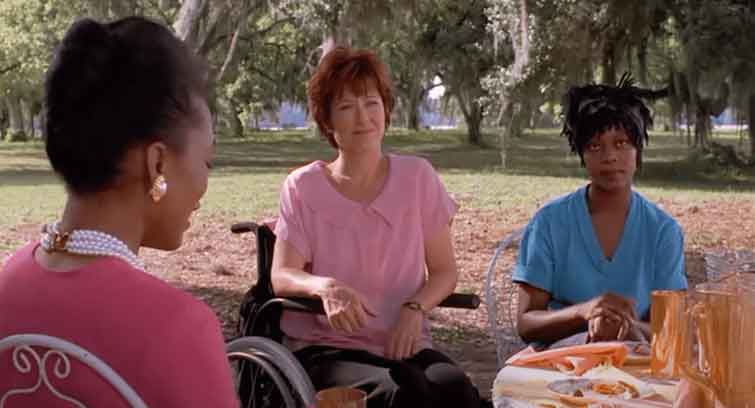
Dialogue is not a low stakes game. It’s usually the last resort when visuals aren’t enough. So, when relying on dialogue, it needs to be purposeful. Every piece of real estate in a screenplay has a mission to move the narrative forward. Even a scene in a well-crafted film that doesn’t appear needed, serves a purpose.
In this scene from John Sayles‘ Passion Fish, Mary McDonnell hosts a group of women from her days as an actress on a soap opera before an accident left her wheelchair-bound. It includes a long monologue by a character who appears only in this one scene.
Cutting it wouldn’t affect the plot, but the story would suffer, as it perfectly captures the shallowness of the protagonist’s former life. The audience still empathizes with her loss of mobility, but this scene helps the viewer to root for her to stop looking back and embrace a meaningful future.
Five Final Dialogue Tips
Dialogue might be ninth in the batting order, but solid contact is still expected at the plate. Anything your character says isn’t simply conversation—it’s a goal-driven strategy.
- Use dialogue to create anticipation. Before Meryl Streep sets foot on screen in this The Devil Wears Prada scene, Emily Blunt‘s words and actions tell us she’s a respected, formidable, and exacting individual. We expect her to roar in like a lion. When she purrs in like a demanding kitten, it’s unexpected and even more frightening and effective.
- Use dialogue to support character qualities and intentions. Barbra Steisand has a mad crush on Robert Redford in The Way We Were. She’s offered him a place to stay and anticipates an evening with him, but he has other plans. Streisand’s character is a caretaker, intense, and a champion of those she believes in. Redford takes life easy, is quick with a joke, and, because he feels like a fraud, fiercely admires those with conviction. In this scene sequence, all those character qualities come into play. She shows him how much she cares by preparing a feast of a meal and revealing she’s read his book. He’s drawn in by her passion and continually uses humor in profound moments.
- Make dialogue specific. What’s wrong? I’m worried I’m going to be late for work. Better response: I’m worried I’m going to miss my first manager’s shift at The Gap. The more specific you get, the more revealed a character becomes. It should also reflect the original voice that’s truthful to the character. In this scene from Sling Blade, Billy Bob Thornton‘s character is sparse with words and on the spectrum, both on display while he still pursues the goal of connecting with his date.
- Use dialogue to reveal conflict, secrets, and lies. In this deleted scene from This is 40, two middle-aged men vie for the affections of a younger woman. Chris O’Dowd aggressively shows interest, while Jason Segel‘s strategy is to “play it cool” until he figures out what she needs, and then pretends to fulfill that role.
- Use dialogue to show what’s important to a character. In Kissing Jessica Stein, Jennifer Westfeldt is struggling with her first same-sex relationship. She’s incredibly close to her mother, Tovah Feldshuh, but doesn’t feel comfortable confiding in her. When you have the building blocks of a character, finding truthful dialogue is simple, although not always easy. It’s helpful to know what’s important to the character when devising their dialogue strategy. Feldshuh knows two things in this scene: her daughter is suffering emotionally, and she loves her dearly. Westfeldt doesn’t dare express what’s wrong and what she needs. Her mother uses a story that illustrates how her daughter’s perfectionism gets in the way of her happiness and then, with one line, gives her daughter the support she needs “I think she’s a very nice girl.” Her mother knew all along and only wanted her happiness. Notice she doesn’t say, “I know you are dating a woman,” because that wouldn’t give her daughter what she needs, which is her approval.
Need additional filmmaking advice, tips, and inspiration? We’ve got you covered:
- The Secrets of Peacemaker’s Storytelling Success
- Revise, Revise, Revise — A Writer’s Guide to Practical Editing
- 3 Unusual Camera Angles to Liven up Your Dialogue Scenes
- Submit Your Scripts: The 7 Best Online Screenwriting Contests
- The Best Free and Paid Screenwriting Software Solutions
Cover image via Stokkete.





